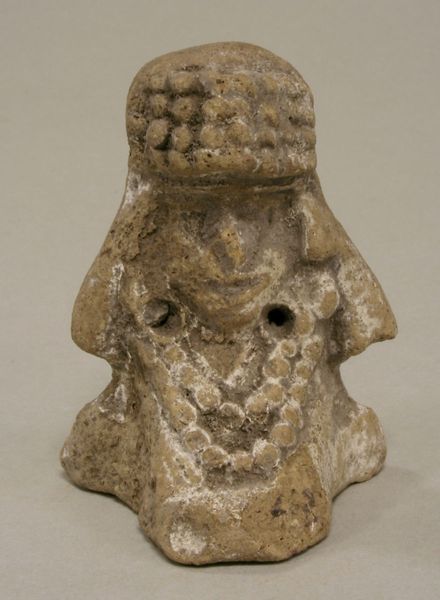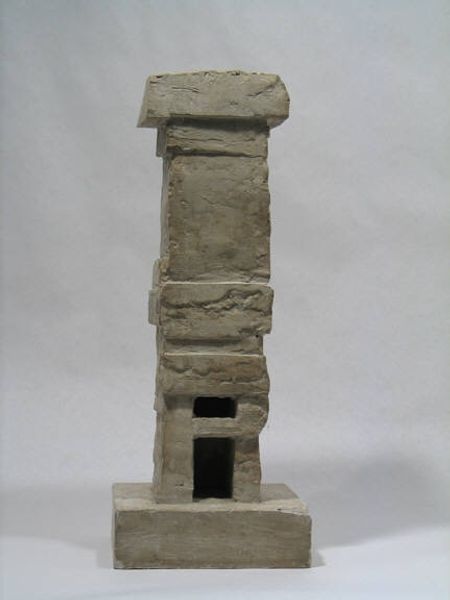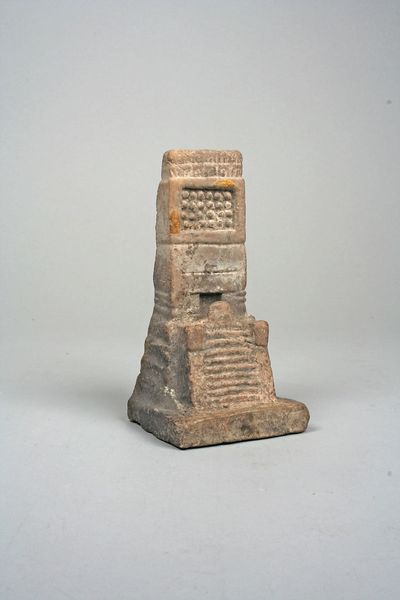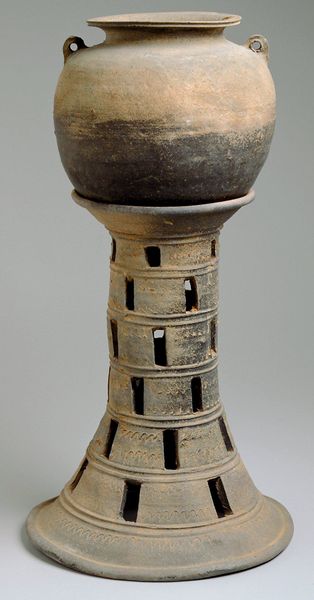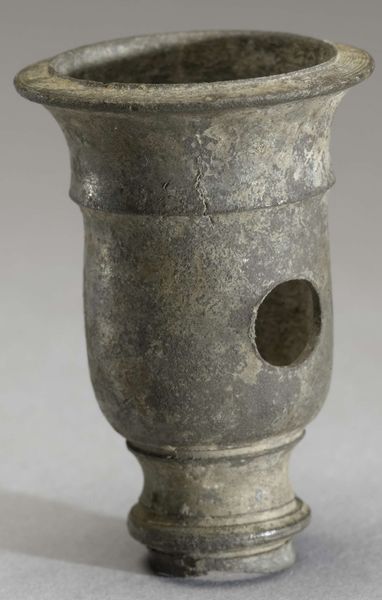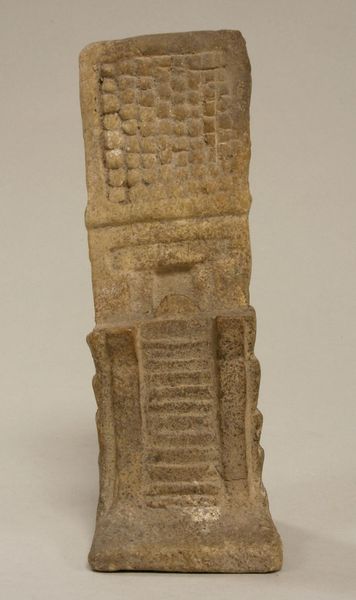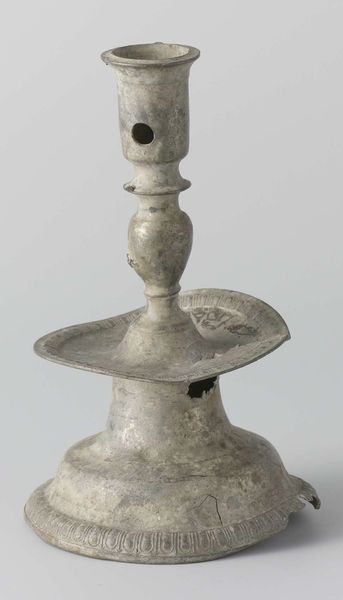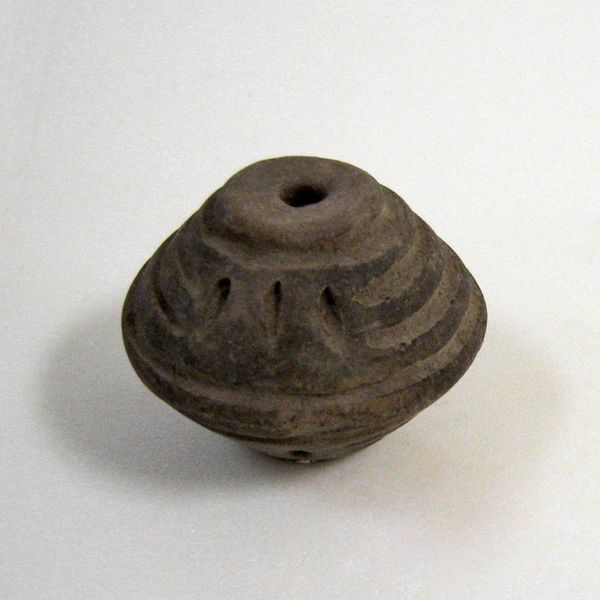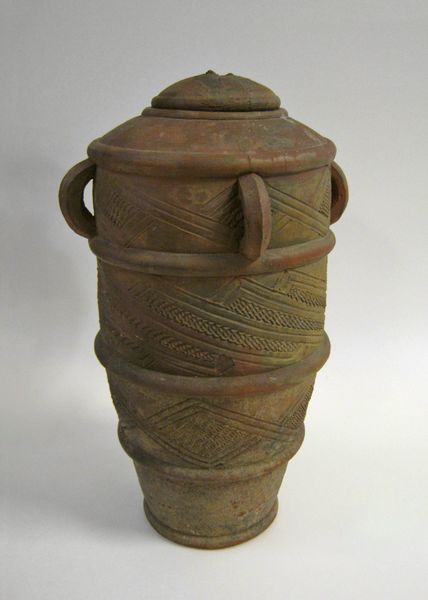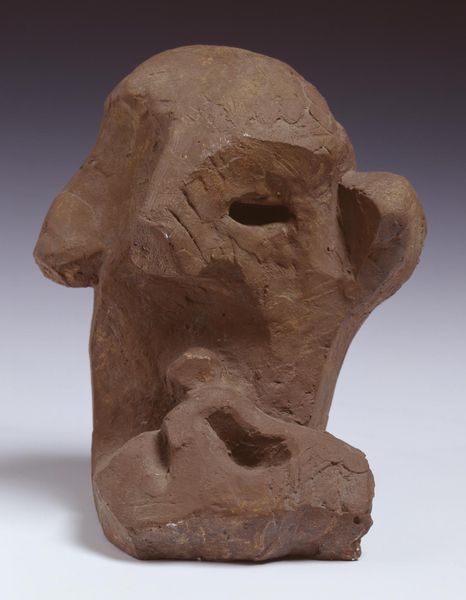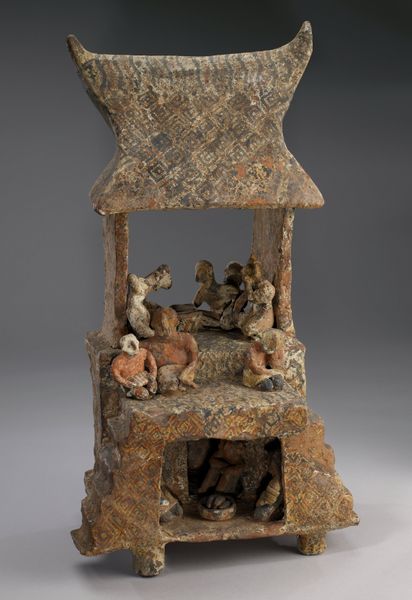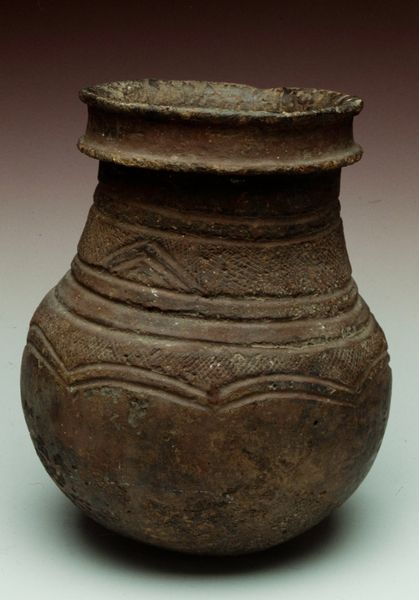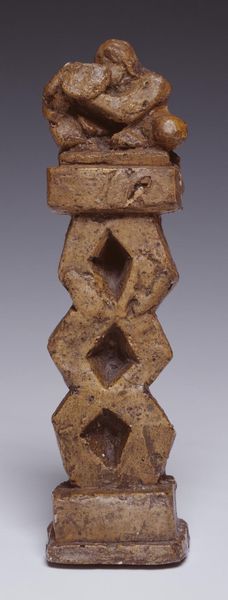
ceramic, sculpture, terracotta
#
sculpture
#
ceramic
#
sculpture
#
terracotta
#
indigenous-americas
Copyright: Public domain
Editor: We're looking at the Temple Model, made of terracotta. It appears to be a carving of a Mesoamerican temple. There is a certain geometric harmony between its levels and the slightly weathered surface, though I am missing what exactly the architectural lines signify. How do you interpret this form? Curator: Focusing on its intrinsic properties, one observes that this Temple Model exhibits a fascinating interplay of geometric forms. Notice how the cuboid base gives way to progressively receding tiers, culminating in a conical apex. These shifts articulate the interplay of vertical and horizontal axes. Editor: So, it is all about the interplay? I mean, what are the visual anchors? Curator: The interplay of rectangular and curved forms creates a tension, animating the overall composition. Furthermore, the rough texture of the terracotta enhances this sense of dynamism. Notice also the presence of perforations near the apex. These apertures punctuate the solid mass of the sculpture, inviting the gaze to penetrate the interior. Editor: Now I see how you are deconstructing it. I realize there's a complex conversation between the planes and their visual echoes. The whole is more than the sum of its parts. Curator: Precisely. A formalist reading encourages us to bracket external referents and appreciate how its visual elements coalesce into a self-referential and self-contained aesthetic whole. Editor: That’s insightful. Thank you for walking me through that. Curator: A pleasure. It seems we've unearthed several formal qualities that merit further contemplation.
Comments
No comments
Be the first to comment and join the conversation on the ultimate creative platform.

